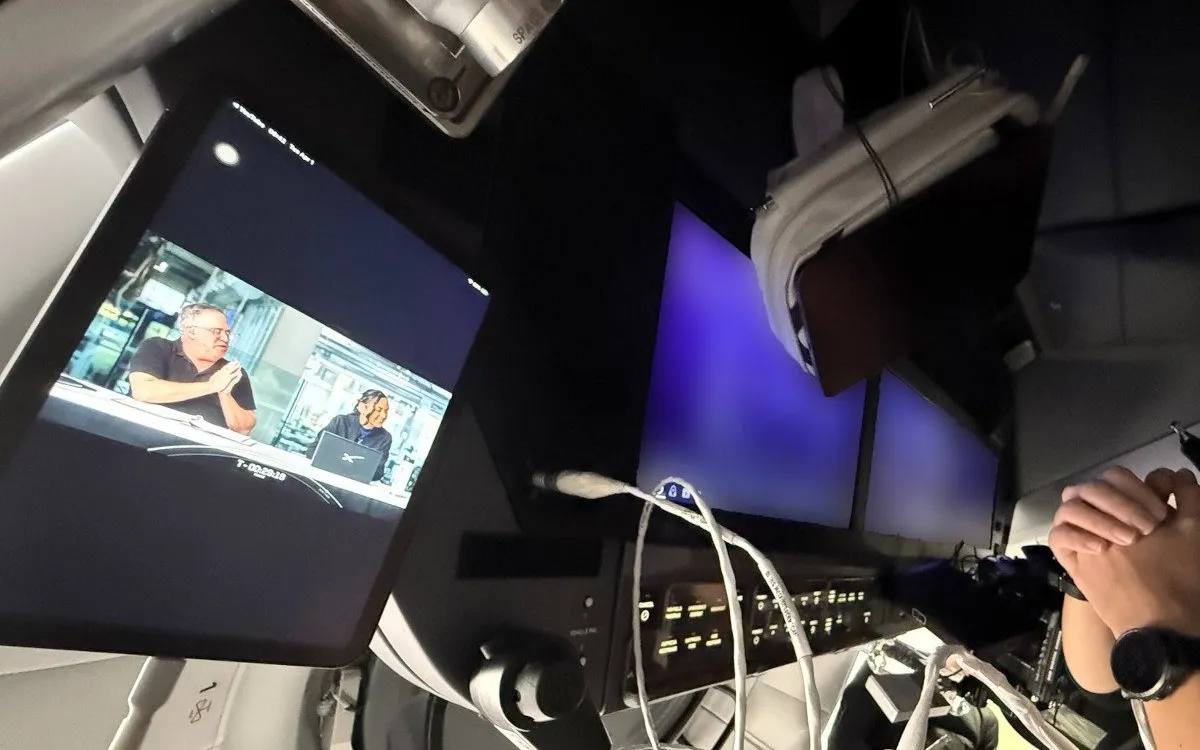
Four space rookies are currently aboard a SpaceX Dragon vehicle, marveling at Earth's polar regions while gathering valuable data from their unique perspective. The Fram2 mission has kicked off with thrilling achievements, marking significant milestones in human spaceflight. Launched on Monday from NASA’s Kennedy Space Center in Florida, this groundbreaking commercial mission is transporting a crew of four private astronauts on an unprecedented journey, orbiting the Earth from above the polar regions.
The Fram2 crew has quickly dived into exciting research studies, sharing a flurry of updates from their orbiting position. The team consists of mission commander Chun Wang, a crypto billionaire and founder of the Bitcoin mining companies f2pool and stakefish; Jannicke Mikkelsen, a Norwegian cinematographer; Eric Philips, an Australian polar adventurer; and Rabea Rogge, a German robotics researcher. Remarkably, all four astronauts are first-time space travelers, with the mission reportedly funded by Wang.
Reflecting on the launch, Wang shared his thoughts on the experience via X, noting, “The ride to orbit was much smoother than I had anticipated. I had imagined it would feel like being in an elevator that suddenly drops, but that sensation never came." He humorously added that if he hadn’t released Tyler, the polar bear zero-gravity indicator, he might not have realized they were already weightless.
However, the initial hours in space were less than smooth for the crew. Wang recounted, “Space motion sickness hit all of us—we felt nauseous and ended up vomiting a couple of times. It felt different from motion sickness in a car or at sea. You could still read on your iPad without making it worse, but even a small sip of water could upset your stomach and trigger vomiting.”
On their first night, the astronauts had the unique opportunity to watch their own launch aboard the SpaceX Falcon 9 rocket. By the second morning, they felt much better, with Wang describing himself as “refreshed.” The crew has been captivated by the breathtaking views from the Dragon spacecraft's cupola window. Some images even reveal faint auroral activity over Earth's poles, enhancing the mission's allure.
From their vantage point, the astronauts are set to observe the aurora-like phenomenon known as STEVE (Strong Thermal Emission Velocity Enhancement), characterized by its hazy purple and green streaks across the sky. In addition to this, the astronauts are conducting 22 research studies aimed at improving our understanding of human health in space and preparing for long-duration missions.
Among their groundbreaking work, the crew performed the first X-rays done in space, a notable achievement in medical research during space missions. They also conducted orbital tests for SpaceX’s Starlink network. Meanwhile, Rogge utilized an amateur radio onboard, named Fram2Ham, to establish contact with Berlin, further showcasing the innovative spirit of the Fram2 mission.
The Dragon spacecraft is currently flying over the planet’s polar regions at an altitude ranging from 265 to 280 miles (425 to 450 kilometers), traveling in a polar orbit at an inclination of about 60 to 90 degrees to the equator. The mission is designed to last between three to five days in orbit, promising more updates and discoveries from space in the days to come.
As the Fram2 mission unfolds, the world watches with anticipation, eager to learn from these pioneering astronauts and their remarkable journey into the cosmos.